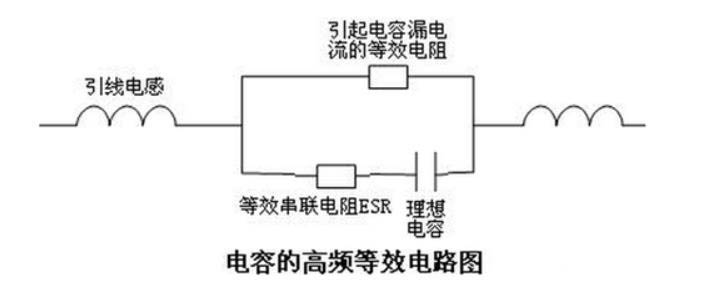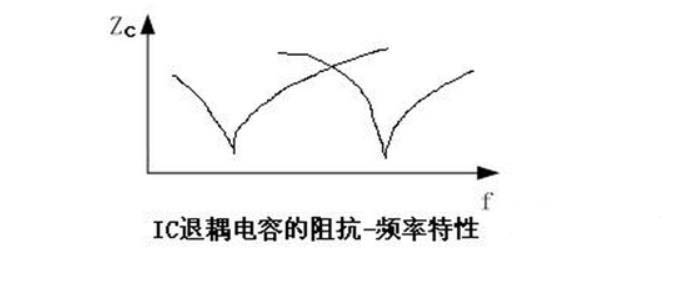Many senior engineers often follow the path of basic and wrong design. This is the high-frequency thinking of electromagnetic compatibility (EMC) design.
Electromagnetic compatibility (EMC) problems often occur in high-frequency conditions, except for individual problems (voltage drops, instantaneous interruptions, etc.). High-frequency thinking refers to the characteristics of devices and circuits. In high-frequency situations, it is different from conventional mid- and low-frequency conditions. If you still judge and analyze based on ordinary control thinking, you will fall into a misunderstanding of design. For example: Capacitor, in the case of medium and low frequency or DC, is an energy storage component, which only shows the characteristics of a capacitor; in the case of high frequency, it is more than just a capacitor. It has the characteristics of an ideal capacitor and has leakage. Current (represented as R on the high-frequency equivalent circuit), lead inductance, and ESR (equivalent series resistance) that causes heat in the case of voltage pulse fluctuations, (as shown in the figure below).

Figure 1: Electromagnetic compatibility (EMC)_Capacitor's high-frequency equivalent circuit diagram
As can be seen from the above figure, designers can help a lot in electromagnetic compatibility (EMC) design.
According to the conventional thinking, 1/2πfc is the capacitive reactance of the capacitor. The higher the frequency, the smaller the capacitive reactance and the better the filtering effect. That is, the higher the frequency, the easier it is to bleed off the clutter, but this is not the case. In the presence of inductance, a capacitor is only when the equation of 1/2πfc=2πf L is established, when the overall impedance is the smallest, the filtering effect is the best, and the filtering effect will be reduced when the frequency is high and low. Analyze the conclusion, why two capacitors are added to the VCC terminal of the IC, one is electrolytic and the other is ceramic, and the capacitance value is generally a little more than 100 times different. It is that the resonance frequency points of two different capacitors diverged for a certain distance, which is good for filtering slightly higher frequencies as well as filtering for lower frequencies.

Figure 2: Electromagnetic Compatibility (EMC)_High-frequency equivalent circuit diagram of wire
The high-frequency equivalent characteristics of the cable or PCB wiring (as shown above), regardless of the high and low frequencies, the wiring resistance is objectively present, but for the wiring inductance, it can only be revealed at the higher frequency. In addition, there is a distributed capacitor. However, when there is no conductor near the wire, this distributed capacitor is useless. Two conductors are necessary to play its role.
The characteristics of inductance and resistance are relatively easy to understand and will not be explained. However, the high-frequency equivalent characteristics of the magnetic ring and the magnetic beads have to be mentioned, because the magnetic ring’s absorbing effect on high-frequency pulsation is similar to the performance of an inductor, so it is often regarded as an inductive characteristic, but in fact it is wrong. . The magnetic ring is a resistance characteristic, but this resistance is a bit special. Its resistance value is a function of frequency R(f). In this case, when a signal with high frequency fluctuations passes through the magnetic beads, the high frequency fluctuations will be caused by I2R generates heat and interferes with the transformation process of electrical energy-magnetic energy-thermal energy. Therefore, when there are strong fluctuations on the wire, the magnetic ring will feel warm to the touch.
The above is the basic knowledge of electromagnetic compatibility (EMC) major in high-frequency thinking. After understanding the knowledge of electromagnetic compatibility (EMC), many design questions have the answers. for example:
1. Why are two capacitors installed on the VCC terminal of the IC, one electrolytic capacitor and one ceramic capacitor? Because of the high-frequency equivalent characteristics of the capacitor, the series connection of the lead inductance and the capacitor causes its comprehensive impedance to change with frequency. At the frequency point of WL= (1/WC), it is the point with the smallest impedance (as shown in the figure below). Moreover, the two capacitors have their own minimum impedance points, respectively corresponding to different frequency points, so as to provide current for the power supply requirements of the IC in different frequency ranges.

Figure 3: Electromagnetic compatibility (EMC)_IC impedance-frequency characteristic diagram of decoupling capacitor
2. The ground wire of the electrostatic workbench uses a wide copper belt and a metal wire mesh snake skin tube instead of a yellow-green round ground cable. The routing inductance of the round ground cable is too large, which is not conducive to high-frequency static electricity. The discharge of electric charge.
3. The distance between the cable and the cable should not be too close, otherwise it will cause crosstalk between the signal cables because of the distributed capacitance of the wire. Of course, the coupling of the signal wire to the ground wire is better to be close. In this way, the fluctuating interference on the signal line can be easily discharged to the ground line.
For electronic engineers, if the electronic devices are regarded as a high-frequency equivalent combined circuit, the electromagnetic compatibility (EMC) design will be more perfect.